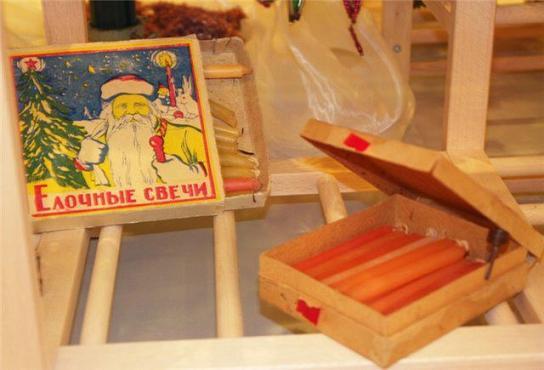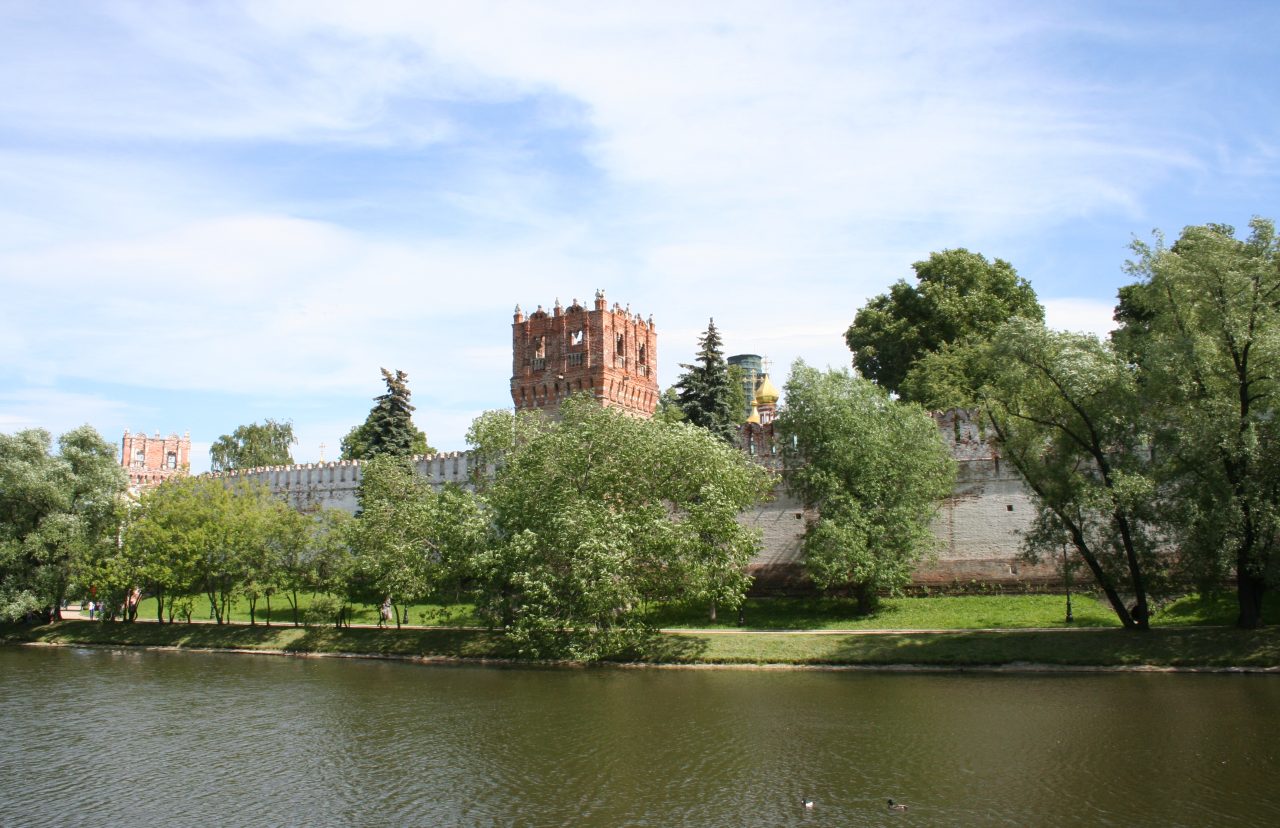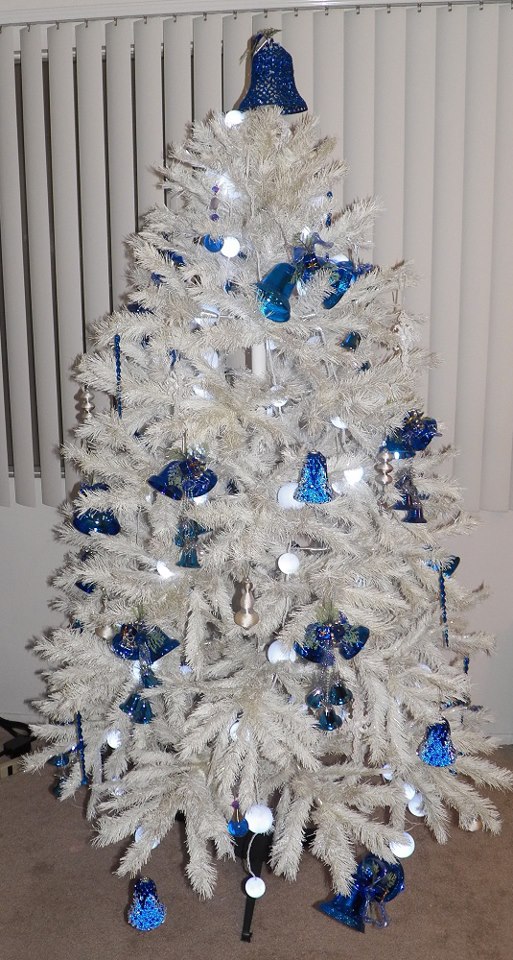There is one thing that we should get out of the way, and it’s pretty significant, before we discuss Christmas in Russia. We need to get the New Year celebration over first. You see, Russia never changed it’s calendar centuries ago when the Roman Catholic Church adjusted the calendar to make it more modern. So Russia still celebrates Christmas on the same day that all Christians did centuries in the past–on what is now 7-8 January.New Years comes 7 days before Christmas in Russia.
About now you’re wondering if there are any differences in the way Russians celebrate Christmas. Yes, there are some differences as well an many things we share in common.

First, Russians do decorate a tree but it’s called a “New Year’s Tree” instead of Christmas tree. The Russian name is ёлка, “YOL-ka.”
Gifts are given too. But Christmas is not a commercial holiday. Gifts are given (usually 1 or 2 per person) on New Years Day. They are considered to be “New Years Gifts.”
A few days before the New Year families buy a New Year’s tree and bring it home to decorate. Now we should warn you that while they are fur trees, a normal tree would be way too big in a small Russian apartment so it is common to use branches instead of the entire tree in many homes.

The annual Nativity Fast:
There are 2 major fasts during the Orthodox year along with numerous “minor” fasts. The fast, called a “post” in Russian, is for the purpose of cleansing and discipline. The first major fast is the Easter Fast and the last of the year is the “Nativity Fast.” A major fast is always followed by a major feast.
The Nativity Fast lasts for 40 days just like the Easter Fast. This fast is sometimes called the “little Pashka” (Easter) because Christ came as a baby and the nativity prepares us to celebrate his birth.
Western calendar fasting period:
Begins in ноября (November) and lasts for 40 days through 24 декабря (December). Christmas day is on 25 December in the West.
Eastern (Russian) fasting period:
Begins later in ноября (November) and lasts until Christmas Eve, 6 январь (January 2012). Christmas day in the East is on 7 January.
Acceptable exemptions to the fast:
– When given an exemption by a priest.
– When traveling.
– When a guest in someones home.
– When guests are in your home.
– For legitimate health reasons.
– Young children are exempt.
– Elderly are exempt (although often they are the most pious).
– When fasting would call undue attention–the fast is for personal discipline, not to make others uncomfortable.
– When a woman is pregnant.
What items does one give up during a fast:
– Meat of any kind (except fish on certain days).
– Oil in cooking.
– Wine, beer, vodka….any kind of alcohol.
– Dairy products.
– Egg products.
– All parties and celebrations are delayed until after 7 January.
– Some couples give up sex completely, others curtail the frequency during the fast, both must agree…and many do.
– It is a good time to try to give up unhealthy habits like smoking, swearing, etc.
“Wow, this is strict!” some will say. So,
What is the purpose of the Orthodox fast:
– Christ fasted for 40 days in the wilderness, eating only fruits and berries. He spent the time in prayer.
– The fasts are designed to assist one to be more like Christ, spending more time in prayer.
– Every time you feel hungry, instead of eating, say a prayer asking God for discipline in your spiritual life.
– Discipline…in the Orthodox faith one should try to discipline the flesh (body). The flesh leads to sin but the spirit leads to everlasting life.
– Such a prolonged discipline leads to a very joyful celebration to the [b]feast of Christ’s nativity[/b] on Christmas day!
How is observed:
– Government offices allow employees to observe the fast and most government cafeterias change to a “fast friendly” menu.
– Most public schools also modify to a “fast friendly” menu.
– Supermarkets and other food stores modify inventory as less meat and dairy products and more vegetable products are purchased. Some even post fast-friendly menu suggestions.
– Many restaurants offer a fasting friendly menu alongside the regular offerings, others switch to a fasting only menu for the 40 days.
– Republics that are primarily Muslim offer the option to employees and in some years the Islamic fast of Eid al-Adha to commemorate Abraham’s willingness to sacrifice his son, as commanded by God is celebrated near the same times as the Nativity Fast.
Do only religious Russians fast?
– Not at all. For some non-religious persons the fast is a cultural event and part of Russian history. Others use it as a time for diet and cleansing.
Russian “Pine Cones” Salad:
Thanks for this recipe to LiveJournal member Jenya2010 who promises that this salad is “just the bomb for the New Year!”
Usually in the 40 day Nativity fast before Christmas (no meat, no oil, no dairy) most Russians take a break and celebrate with one heck of a meal on New Year’s Eve. Afterwards the fast resumes until Christmas on 7 January.
Russians speak of a “table” when describing a special meal and the “New Year’s table” is one of great tradition filled with varied and rich treats. When Russians (and Ukrainians, Moldovans, Bulgarians, Belorussians, etc) you’re assured that the meal will be beautiful and festive.
So with acknowledgment and thanks to Jenya, today we have a tasty recipe for the Russian New Year’s salad “Pine Cones” – Салат Сосновые шишки in Russian.

To make this wonderful salad you will need:
– 3-4 potatoes
– 200 grams of smoked chicken
– 1 onion and 1 cucumber
– 200 grams of canned corn (can substitute peas)
– 3 eggs
– 150-200 grams of melted cheese
– Nuts
Of course to make the dish festival you’ll do more than simply prepare the dish. This dish should be decorated with pine/spruce sprigs and perhaps some whole almonds or Rosemary.
The preparation of this salad is very simple:
– Cook the potatoes and boil the eggs, then grate.
– Chope the chicken into cubes.
– Saute the onions lightly and then chop.
– Add some fresh cucumbers – if so then cut them into thin strips.
– Grate cheese, chop the nuts (walnuts or almonds will also work if pine nuts are not available). Mix the nuts and grated cheese.
– Prepare the ingredients in layers as listed below, each having mayonnaise (I swear Mayo is a “food group” in Russia!) or you can also use sour cream.
1 layer – potatoes
2 layer – smoked chicken
3 layer – onions
4 layer – corn (peas, cucumbers)
5 layer – eggs
6 layer – cheese with walnuts
Now take the layer and roll into the form of a pine cone or with the ingredient amounts listed you can make two cones.
Decorate the cones with pine nuts, almonds or walnuts, and then garnish with natural rosemary sprig or pine/spruce.
Enjoy the taste…and the compliments of your guests!
Our friend Viktoria from www.funrussian.com has an excellent tutorial on Russian Christmas traditions and we invite you to enjoy her descriptions at this link.

Flowers area a popular New Year and Christmas gift especially for a loved one or if visiting someone’s home for the holiday. Russians will brave just about anything, including a winter storm, to obtain fresh flowers.
The Christmas Eve and Christmas Day meals:
Christmas, just like New Years, is celebrated over two days. Most Ukrainians and Russians have been fasting for 40 days and the last meal eaten on Christmas Eve keeps most of that fast–no oil, no eggs or dairy, no meat (except at this meal there is fish), and almost no alcohol (one small wine toast).
But don’t worry, the food is both delicious and plentiful!
One should TOTALLY fast from all foods from Noon to the evening feast. Some believers fast all day before the evening feast.
There are several themes running thru the “The Holy Supper:”
– A white tablecloth reminds the family that Christ was wrapped in cloths at this birth, and the white represents his purity.
– Straw or hay is spread around the table settings as a reminder that the Saviour of the world was born in a humble manger. Our family puts little bit of straw in a bowl which is passed around the table as each person takes a handful to “decorate” around his/her place setting.
– Three candles in the center call to mind that his birth was at night and likely by candlelight. The 3 candles represent the fact that with his birth was the idea of the “Trinity.”
– There are 12 foods to serve, in a variety of colours, and these represent the 12 Apostles.
– When the family approaches the table they each take a piece of bread and eat it, a symbol that the family will share this meal together as part of a sacred holiday.
– Next everyone takes a small piece of garlic, dips it into honey and eats. This combination of bitter/sweet is a symbol of how life is, yet a family together can support each other in those times.
– Next the host (or a priest if present) says an Orthodox prayer for the meal. Then before being seated a small toast of wine is made (the only alcohol during the meal). Wine is a symbol of Joy in the Christian Scriptures and this is the season of joy.
– Then the host (or a priest if present) sprinkles lightly some church ‘holy water’ over the gathered food as a blessing.
Traditionally, the “Holy Supper” consists of 12 different foods, symbolic of the 12 Apostles. Although there is also some variation in the foods from place to place and village to village, the following is a good summary of what is typically served.
In some families, the father begins the Christmas meal by leading the family in the Lord’s Prayer, a prayer of thanksgiving for the blessings of the past year and for the good things to come in the new year. The head of the family greets those present with “Christ is Born!” – the traditional Russian Christmas greeting – and the family responds with “Glorify Him!” The Mother then draws a cross with honey on each person’s forehead, saying a blessing – “In the Name of the Father and of the Son and of the Holy Spirit, may you have sweetness and many good things in life and in the new year.”
The Lenten bread (Pagach) is then broken and shared. The bread is dipped first in honey to symbolize the sweetness of life and then in chopped garlic to symbolize life’s bitterness.
The twelve foods are:
– Mushroom soup with zaprashka; this is often replaced with Sauerkraut soup
– Lenten bread (“pagach”)
– Green cabbage leaves stuffed with seasoned sauerkraut, tomatoes, or peppers stuffed with rice/vegs.
– Pickled herring with marinated onions
– Baked cod and/or Shrimp (sometimes Salmon)
– Fresh Apricots, Oranges, Nuts, Figs and Dates
– Beet and potatoe vinigerette Salad
– Kidney beans (slow cooked all day) seasoned with shredded potatoes, lots of garlic, salt and pepper to taste
– Peas or Rice
– Parsley Potatoes (boiled new potatoes with chopped parsley and margarine)
– Bobal’ki (small biscuits combined with sauerkraut or poppyseed with honey)
– Red Borsch
The (Christmas) Nativity Feast
On Christmas morning many families will go to church and on the other hand many will stay home. The balance of the day will be spent in final preparations for the bigger feast, the traditional Christmas Day feast.
This feast is literally designed to “break the fast” of the previous 40 days. So as you can imagine there will be lots of meat, oil, dairy, and of course alcohol for toasting! It doesn’t have to be as elaborate, but it usually is and most certainly there are dishes with meal and oil!
Счастлйвого Рождества! (Merry Christmas!)

With a tip of the hat to our friend Viktoria from http://www.funrussian.com we’ll teach you a couple of useful Russian Christmas phrases.
Рождество (n.) [razh-dees-TVO] = Christmas
Example:
Рождество – мой любимый праздник. (Christmas is my favourite holiday.)
[razh-dis-TVO moy lyoo-BEE-miy PRAZ-neek]
ёлка (n.) [YOL-ka] = Christmas tree
Example:
Вы будете наряжать ёлку в этом году? (Are you going to decorate a tree for New Year’s this year?)
[vee BOO-dee-tye na-rya-ZHAT’ YOL-koo v E-tam ga-DOO]

As we say in the Orthodox Christmas liturgy, Christ is born–glorify Him!






Pingback: Christmas in Russia « The Mendeleyev Journal
Pingback: Russian Christmas Eve, 6 January 2013 « The Mendeleyev Journal
Pingback: Christmas in Russia « The Mendeleyev Journal